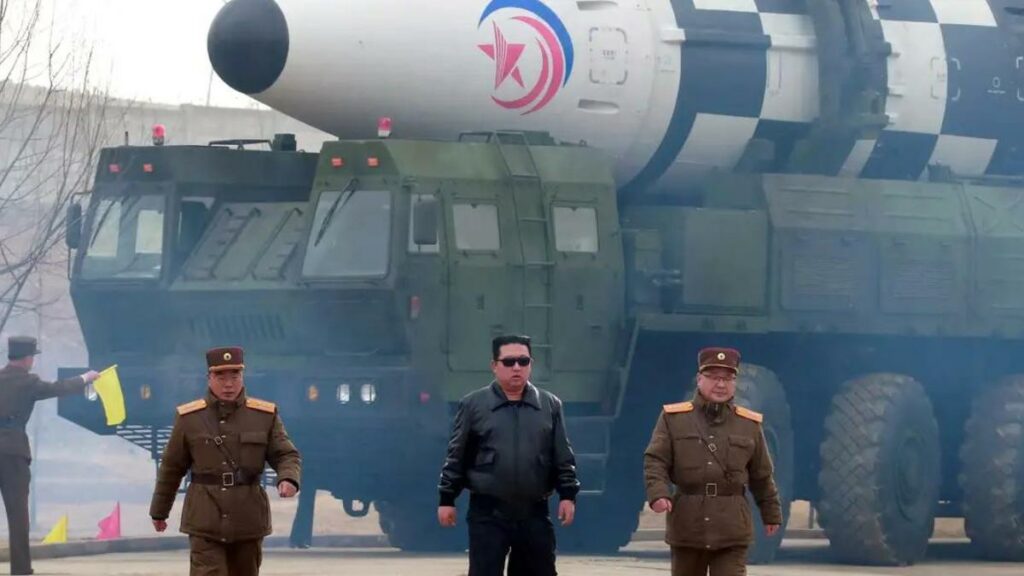Unraveling the Enigma: The Complex Conflict Between North and South Korea

Introduction:
The Korean Peninsula, nestled between China and Japan, bears witness to one of the most enduring and complex geopolitical conflicts of the modern era – the conflict between North and South Korea. This multifaceted struggle, rooted in historical, ideological, and geopolitical factors, has persisted for decades, shaping the destinies of the Korean people and influencing global politics. In this extensive exploration, we delve into the historical backdrop, key factors, and evolving dynamics of the conflict, seeking to unravel the complexities that define the relationship between North and South Korea.
Section 1: Historical Context
1.1 Division of Korea:
The roots of the conflict can be traced back to the end of World War II when Korea, previously under Japanese colonial rule, was liberated. The Korean Peninsula was divided along the 38th parallel into two occupation zones – the Soviet-occupied North and the American-occupied South. This division set the stage for the establishment of separate Korean states.
1.2 Korean War (1950-1953):
The Korean War, a pivotal chapter in the conflict, erupted in 1950 when North Korean forces, backed by the Soviet Union and China, invaded South Korea. The conflict drew in international forces, with the United States leading a United Nations coalition to support South Korea. The war ended in an armistice in 1953, solidifying the division along the 38th parallel.
Section 2: Ideological and Political Divide
2.1 Juche Ideology:
North Korea, under the leadership of Kim Il-sung, adopted the Juche ideology, emphasizing self-reliance and independence. This ideology became a cornerstone of North Korean governance, shaping the nation’s policies and isolating it from the global community.
2.2 Capitalist Democracy in the South:
Conversely, South Korea adopted a capitalist and democratic system, aligning itself with the Western bloc during the Cold War. The political ideologies and economic systems of the two Koreas further deepened the divide, fostering distinct identities and worldviews.
Section 3: Military Buildup and Nuclear Ambitions
3.1 Military Posture:
Both North and South Korea maintained large standing armies, and the Korean Demilitarized Zone (DMZ), established after the Korean War, became one of the most heavily fortified borders in the world. Military tensions have persisted, with occasional incidents threatening to escalate into larger conflicts.
3.2 North Korea’s Nuclear Program:
One of the most pressing issues in the conflict is North Korea’s pursuit of nuclear weapons. Despite international sanctions and condemnation, North Korea has conducted multiple nuclear tests, raising concerns about regional and global security. The nuclear question adds a layer of complexity to diplomatic efforts to resolve the conflict.
Section 4: Inter-Korean Relations and Diplomacy
4.1 Sunshine Policy:
Over the years, various attempts have been made to improve relations between North and South Korea. The “Sunshine Policy,” initiated by South Korean President Kim Dae-jung in the late 1990s, aimed at engagement and reconciliation. However, progress was limited, and the policy’s effectiveness remains a subject of debate.
4.2 Inter-Korean Summits:
In recent years, there have been historic inter-Korean summits, including the meetings between North Korean leader Kim Jong-un and South Korean President Moon Jae-in. These summits raised hopes for improved relations, but substantive changes in the geopolitical landscape have been slow to materialize.
Section 5: Humanitarian and Human Rights Concerns
5.1 Humanitarian Challenges:
The conflict has taken a toll on the Korean people, leading to humanitarian challenges on both sides. Families separated by the division long for reunification, and the legacy of the Korean War continues to shape the lives of individuals who experienced its impact.
5.2 Human Rights Abuses in North Korea:
Human rights concerns, particularly in North Korea, have garnered international attention. Reports of political repression, forced labor camps, and restrictions on freedom of expression raise ethical questions and contribute to the complexity of engaging with North Korea.
Section 6: International Involvement and Geopolitical Implications
6.1 China and Russia:
China and Russia, both neighboring countries, have historical ties to the Korean Peninsula. Their involvement, particularly during the Korean War, has influenced the dynamics of the conflict. Today, their positions on North Korea’s actions and the broader geopolitical context shape the region’s stability.
6.2 United States and Global Security:
The United States, as a key ally of South Korea, plays a crucial role in the conflict. The presence of U.S. military forces in the region, combined with ongoing diplomatic efforts, has implications for regional stability and global security.
Section 7: Future Prospects and Challenges
7.1 Denuclearization Talks:
Recent diplomatic efforts, including talks between North Korea and the United States, have focused on the denuclearization of the Korean Peninsula. However, progress has been slow, and challenges remain in finding a comprehensive and lasting resolution to the nuclear question.
7.2 Economic Cooperation:
Economic cooperation and joint projects between North and South Korea have been proposed as potential confidence-building measures. Initiatives such as the Kaesong Industrial Complex, which involved South Korean businesses operating in North Korea, exemplify attempts to bridge economic divides.
7.3 Reunification and Long-Term Solutions:
The ultimate goal for many is the reunification of North and South Korea. However, achieving reunification poses immense challenges, including differing political systems, economic disparities, and the entrenched ideologies that have defined the two nations.
Conclusion:
The conflict between North and South Korea is a nuanced and multifaceted geopolitical puzzle deeply rooted in historical, ideological, and geopolitical factors. The intricate interplay of these elements has shaped the destinies of the Korean people, influencing the course of their nations and impacting global security. As diplomatic efforts, humanitarian concerns, and geopolitical shifts continue to shape the Korean Peninsula’s future, the path toward lasting peace and reconciliation remains a complex journey. The resolution of the conflict is not only crucial for the Korean people but holds broader implications for regional stability and global geopolitics.




